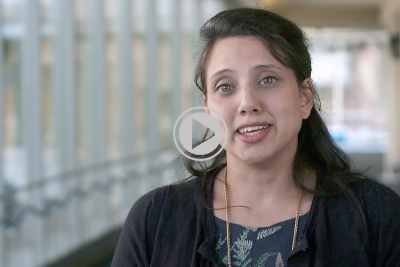In December of 2019, the entire world inadvertently took the on-ramp and started flying down the Pandemic Freeway. It’s been a scary ride. None of us knew the tumultuous ride that awaited us back then, but my question to you today is, “What exit ramp are you planning to take from the world’s deadliest freeway?”
The last year has been tough for all of us. Rarely does a catastrophic event collectively impact every person in the world; yet, it has touched each of our lives in some way. I have lost my mother, mother-in-law, grandmother and aunt. I have friends who lost their livelihoods through lay-offs or childcare issues, and I’ve had pregnant patients who were scared to seek medical care they desperately needed because they felt that the hospital posed a greater threat than their pregnancy complication. If I can be frank, that last year has sucked! It feels like groundhog’s “year” as the Delta variant descends upon us, making 2021 start to look eerily similar 2020, but how do we get out of it?
My employer recently mandated vaccination for all employees. As a high risk obstetrician, I’ve been inundated with requests from pregnant, lactating, and fertility patients who are either seeking information to make a more informed decision or are furious that they feel forced to do something that they don’t want to do. I sympathize with their fear of the unknown. Please let me explain why I fear COVID even more.
A glimpse into my last 24 hours…
Writing this piece is somewhat therapeutic because I am troubled by what I have seen caring for pregnant patients during the pandemic. Yesterday morning, the obstetric resident and I donned our N95 mask, face shield, gown, and gloves in the decontamination room that led us into the patient’s COVID isolation room. Her respiratory status was worsening. There were significant decisions to be made, like who she would like to act in her best interest if she could not make decisions for herself, or whether she would like a c-section if the baby began showing signs of distress from her COVID infection too. I have found myself in this situation more times than I care to remember over the last 18 months.
As we entered her room, I could see that the work of breathing was exhausting her. It was clear that we were teetering on the edge of her needing more support to be able to breathe. She declined everything we offered her. When I see patients get to this point in their COVID journey, they are scared, angry, and sometimes lash out at those of us charged with caring for them. I begged and pleaded with her to let me put the oxygen on her because it could help her to feel better and the baby needed it. She was angry—what should have been one of the happiest times in her life was becoming a nightmare. Each declination of therapies that could help her feel better was punctuated with coughing and hacking inches from my face. As our minutes in that room added up, I felt bad for her, and I felt bad for us. When patients are behaving in ways that we don’t understand, trauma informed care teaches us to change our internal question from, “What is wrong with you?” to “What happened to you?” I don’t know what had happened in her life leading up to yesterday, but reframing that question helped turn my frustration into empathy. Even so, I am human. I have to admit that the empathy that kept me in the room trying to care for her was counterbalanced with my own anger for what that meant for our team. She, like so many, was coughing and hacking with no awareness of the fact that our being in that room was for her benefit and, potentially, to our detriment.
She realized my worst fears as her respiratory status deteriorated to a level that I could no longer manage on our floor. She would need a tube placed down her throat and into her lungs to breathe for her with a machine. I felt dejected and feared the road ahead for her and her baby. . . I’d naively thought that that chapter of the pandemic was over. Yet, here I was experiencing déjà vu of the early pandemic days–the most traumatic professional period I’ve lived through in my 15 years as a physician. Many of us, as healthcare professionals, question whether we can emotionally handle going through this again. As masking and vaccination debates rage on, those of us whom you rely on to care for you in your darkest hour are already exhausted.
Last March, I’d wanted to retreat to the safety of my home and care for my newly out-of-school little girls, just like everyone else; but, a pandemic didn’t stop babies from being born. I overcame enough of the fear and anxiety to force myself to go to work each day to care for birthing people and their babies, even as I worried that caring for them could be putting my own family in harm’s way. Since those early days, we’ve learned so much. Not only do we know how the virus is transmitted, but we have medications to decrease the severity once infection occurs and, even better, we have vaccines that can prevent COVID-related infection, hospitalization, and death for the vast majority of people.
So, I ask, what is your personal exit strategy from the pandemic? It’s a simple question because there are only 2 exits on the Pandemic Freeway. Exit 1 was the only option for the first year and it is marked by COVID infection. Many people can take this exit unscathed, but an unfortunate number get battered and bruised—some for months to years. The exit ends in death for 1-2 of every 100 people who take it. My patient is currently on this ramp. She has already fulfilled the statistic that pregnant patients are three times more likely to be admitted to the ICU and 3 times more likely to need a machine to breathe for them than non-pregnant people with COVID. I pray that she will defy the statistic that being pregnant with COVID also means that she is also twice as likely to die. The Exit 2 sign is marked by vaccination and it is now wide open if you are fortunate enough to live in a country that can “pay the toll”, such as the United States. Unfortunately, most of the rest of the world is not this lucky and cannot overcome the barricades to access this pathway to prevention.
Despite these exit ramps, the pandemic freeway remains congested and prone to adversity, as the virus continues to find a high concentration of vulnerable hosts to infect and mutate into new, more dangerous forms, like the Delta variant. Does getting infected by a virus that has literally invaded and mutated through the bodies of millions of people around the world, before you breathe it in on Exit 1, seem safer than a vaccine created by scientists under sterile conditions that has been taken by millions of people with great benefit and minimal harm? Let us not forget those among us who are unable to get the vaccine for a variety of reasons, including our children under the age of 12 who do not yet qualify and remain vulnerable. They depend on those of us who can get vaccinated for their protection. We each have a choice for how we exit this pandemic. My patient’s long and painful exit strategy has begun, and I do not wish that tumultuous exit ramp on anyone. Our greatest hope for ending the pandemic is that enough of us choose Exit 2 to decrease traffic on the Pandemic Highway and, ultimately, shut it down. What is your personal exit strategy—is it Exit 2, or staying in traffic long enough that the choice for Exit 1 is made for you?






Comments